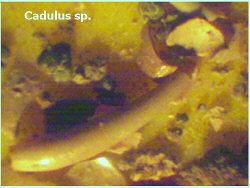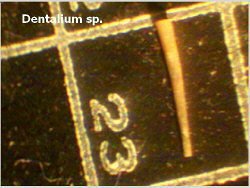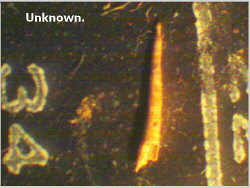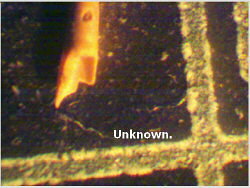What is it?
I have been picking microfossils from my Eocene material
that comes from
the Hurricane Lentil, Cook Mountain Formation, Claiborne Group, at the
Alabama Ferry Crossing, Trinity River, Houston County, Texas. I have been
finding a small spire shaped fragments that I cannot recognize. The spires
are about 3-4 mm in length. They look like they could be an ornamental spire
that has broken off the body whorl of a snail, kind of like what you imagine
adorned the snail Typhis gracilis (Claiborne, Gosport Sand)
or a spire that
broke off from the modern snail, Comb Murex. They also resemble scaphopods
which are abundant in this material.
Pictured below are two pictures of common scaphopods
in the material I
am working with. The first is Cadulus sp. and the second is a Dentalium
sp.
fragment. The third through fifth picture are the spires I cannot identify.
One picture shows the whole spire, another shows the apex of the spire
which is closed thus precluding the possibility of it being a scaphopod,
and the last picture shows the open end which shows that it is hollow.
I am familiar with most snails from this site and
none have ornamentation
such as this spire. Does anyone have an idea as to what the spire is?
JKFoam
Viewer Comments:
They are pteropods; one of two common pteropod genera
present in the
late middle Eocene deposits of the area. Pteropods are planktic gastropods.
The ones you show are fully grown. Note the bulbous form of the first-formed
part of the shell.
Go-Back Text
Menu or Thumb
Menu
Home
Page




